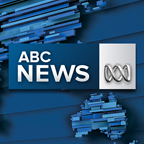
Sometimes the toughest part of catching a wave is fighting for your right to be on it.
"I think men sometimes think you can't surf, so they probably expect that you're not going to catch the wave, so they paddle in front of you, or drop in on you," said experienced Melbourne surfer Rose Pie.
"Or they crowd you when you're trying to take off," said her friend, Roxy Millar.
The line-up to get onto a wave can be an intimidating place for anyone, to others it can seem downright aggressive.
Women, beginners, older surfers and even the strongest boardriders recognise there's an issue.
"The surf is getting really crowded and it can turn a lot of people off," former world champion Mark Occhilupo told 7.30
"I've got friends that don't surf anymore because of surf rage. It's a massive problem that we have."
Business is booming
Crowded breaks and aggression in the line-up go some way to explain why some surfers in Melbourne and Sydney are willing to pay up to $100 an hour to surf in a wave park.
Ying Chan is part of a women's surf group that meets each week at the URBNSURF wave park at Melbourne's Tullamarine.
"When people drop in on you, or [are] snaking the queue, or paddling across the shoulder so you can't catch a wave, or not waiting their turn ... you don't need to do that here," she says.
"It's really nice and orderly."
The waves are powered by a series of paddles, and the wave height can be dialled up or down on demand. A surfer can expect to ride 12 waves in an hour.
Wave parks are expensive to build and operate – a new site in Sydney cost $80 million — but their backers are optimistic that they'll become successful businesses.
Two artificial breaks are now open in Australia, with three more in the pipeline, including an artificial wave in Yeppoon, Queensland, generated by a giant plunger.
A prototype system generated a circular wave with five separate rideable breaks.
Co-inventor Kit Sidwell says the company, Surf Lakes, has raised around $30 million from investors, and has around 15 licensing agreements in the works around the world.
"Several of those could start in the next year to two years," Mr Sidwell said.
Wave parks have been around for decades but were never much good.
Steven Schmied has been researching wave park technology for 20 years.
He has designed an indoor wave pool in the Netherlands with a wave that's generated by a towed hull-shape, like an upturned boat.
He says a wave park in Snowdonia in Wales, as well as the Tullamarine site, have proven that wave parks are viable.
"They cost multi-millions of dollars to build, but now with a growing population, surfing is very popular," Mr Schmied said.
"It's in the Olympics. It's just come to the right point where these pools are now being proven to be financially viable and actually provide a really fun surfing experience."
Jennifer Vandekreeke, the CEO of URBNSURF, is first to recognise that it's not easy to turn an artificial wave into a thriving business.
"Once you've built one, you have to operate it and you have to commercialise it," she told 7.30.
"Even though there's over 200 that have been announced, there's only about a dozen that are actually in operation today, and I can think of about a dozen that they've actually broken ground and are going to open soon."
The Snowdonia facility recently closed after battling mechanical problems and extended COVID-era shutdowns.
A training ground for aspiring surfers
URBNSURF in Tullamarine opened in 2020, and the sites in both states are attracting some very good surfers – like Milla Grainger, aged 11, and her eight-year-old sister Chloe.
"We like doing competitions," Milla says.
"I feel like when you're here its really good for practising because you can choose a setting and you know what's actually coming.
"In the ocean it's way harder because you don't know what's coming."
The girls live in the surfing mecca of Sydney's northern beaches but their parents bring them to the facility at Homebush to hone their skills. It's at least an hour's drive each way.
"We catch, like, 16 waves per hour here," Milla said.
They wouldn't get anywhere near that many waves in the ocean.
"Not unless we had a five-hour session or something like that," said Chloe.
"Here we know what we're going to get, and the girls can practise exactly what they need to do, " said their mum Rea.
Watch 7.30, Mondays to Thursdays 7:30pm on ABC iview and ABC TV









 Add Category
Add Category